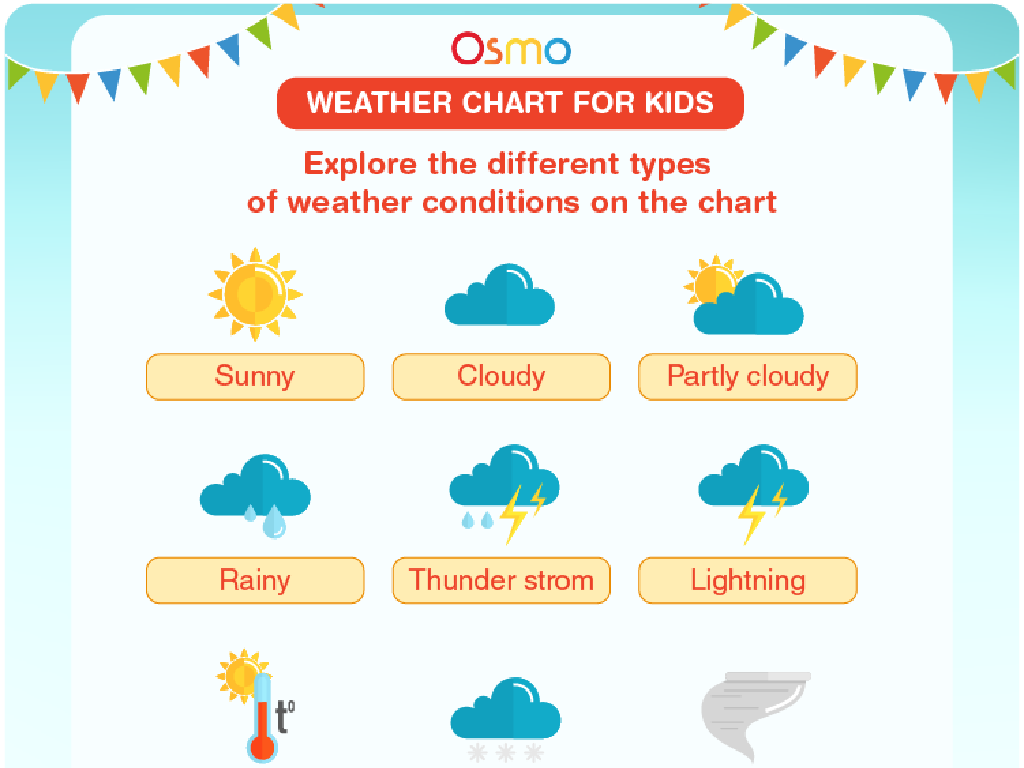Origins Of Christianity
Subject: Social studies
Grade: Seventh grade
Topic: World Religions
Please LOG IN to download the presentation. Access is available to registered users only.
View More Content
Origins of Christianity
– World religions overview
– Christianity’s global impact
– One of the largest faiths, influencing cultures worldwide
– Origins and core beliefs
– Emerged in the 1st century, based on Jesus Christ’s teachings
– Christianity’s spread and growth
– Spread through apostles, missionaries, and converts
|
This slide introduces students to the study of world religions with a focus on Christianity, emphasizing its role as one of the largest and most influential religions globally. Begin by discussing the variety of beliefs around the world to provide context. Highlight Christianity’s significant impact on history, culture, and society. Explain that Christianity originated in the 1st century and is centered on the life and teachings of Jesus Christ. Discuss the key beliefs such as the belief in Jesus as the son of God, his resurrection, and the concept of salvation. Conclude with an overview of how Christianity spread rapidly through the efforts of the apostles, missionaries, and early converts, and how it continues to grow and evolve today. Encourage students to think about how religions can shape cultures and personal beliefs.
The Birth of Christianity
– Originated in Judea
– A small region in the Middle East
– Roots in Judaism
– Christianity emerged from Jewish traditions and scriptures
– Jesus of Nazareth’s role
– Central figure in Christianity, believed to be the messiah by Christians
– Jewish concept of the messiah
– In Judaism, the messiah is awaited as a future leader and savior
|
This slide introduces the origins of Christianity, highlighting its beginnings in Judea, a region in the Middle East. Emphasize the connection between Judaism and Christianity, noting that Christianity grew out of Jewish traditions and scriptures. Jesus of Nazareth is presented as the central figure of Christianity, whom Christians believe to be the messiah prophesied in Jewish texts. Discuss the Jewish concept of the messiah as a future leader and savior, contrasting it with the Christian belief that Jesus fulfilled this role. Encourage students to reflect on the similarities and differences between the two religions’ understanding of the messiah.
Teachings of Jesus
– Jesus’s message of love and forgiveness
– Emphasized compassion and pardoning others
– Parables: Stories with morals
– Simple stories used by Jesus to illustrate moral lessons
– The Golden Rule
– Treat others as you wish to be treated
– Impact on ethical living
– Encouraged positive behavior and social justice
|
This slide aims to introduce students to the core teachings of Jesus, which are central to the Christian faith. Jesus’s teachings focused on love, forgiveness, and living a moral life. Parables, which are simple stories with deeper moral meanings, were commonly used by Jesus to communicate his teachings to the people. The Golden Rule is a fundamental ethical guideline that encourages individuals to treat others as they themselves would like to be treated. These teachings have had a profound impact on ethical living and the moral framework of societies influenced by Christianity. Encourage students to think about how these teachings might apply in their own lives and in modern society.
Spread of Christianity
– Paul’s role in spreading Christianity
– Apostle Paul traveled extensively, preaching to Gentiles
– Greek and Latin in spreading the message
– Common languages helped spread Christian teachings
– Persecutions faced by early Christians
– Early Christians were often persecuted for their beliefs
– Christianity’s acceptance by Rome
– Over time, Christianity became the official religion of the Roman Empire
|
This slide explores the spread of Christianity in the early centuries. Emphasize the pivotal role of apostles, especially Paul, who traveled and preached to non-Jews, expanding Christianity beyond its Jewish roots. Highlight how the use of Greek and Latin, the lingua franca of the time, allowed the message to be understood widely. Discuss the challenges early Christians faced, including persecution and martyrdom, which paradoxically strengthened the faith among believers. Conclude with the significant turning point when Christianity was accepted and then adopted by the Roman Empire, leading to its spread throughout Europe. Encourage students to reflect on how religions spread and the factors that contribute to their growth.
Christianity’s Holy Text: The Bible
– The Bible: Core of Christian faith
– Old Testament: History and laws
– Before Jesus’s time, includes creation, prophecies, and moral laws
– New Testament: Life of Jesus
– Stories of Jesus, his teachings, and the early church
– Gospels and Epistles: Teachings and guidance
– Gospels detail Jesus’s life; Epistles are letters to early Christians
|
The Bible is the foundational text for Christians, consisting of the Old Testament and the New Testament. The Old Testament, which is shared with Judaism, contains historical narratives, laws, wisdom literature, and prophecies. The New Testament focuses on the life and teachings of Jesus Christ and the beginnings of the Christian church. It includes the Gospels, which provide accounts of Jesus’s life and moral teachings, and the Epistles, which are letters offering further instruction and insight to early Christian communities. Understanding the structure and content of the Bible is crucial for students as they explore the origins and beliefs of Christianity.
Christianity Today: Global Impact
– Over 2 billion global followers
– Christianity is one of the largest religions worldwide.
– Diverse denominations exist
– Includes Catholicism, Protestantism, Orthodoxy, etc.
– Influence on culture and art
– Visible in music, literature, and architecture.
– Shaped historical events
– Key role in shaping societies and politics.
|
This slide aims to provide an overview of the current state of Christianity and its widespread influence. With over 2 billion adherents, Christianity has a significant presence around the globe. The religion is divided into various denominations, each with its own traditions and beliefs. Students should understand the impact of Christianity on various aspects of culture, including art, music, and literature, as well as its role in historical events and the shaping of modern societies. Encourage students to think about the presence of Christian influences in their own lives and communities, and prepare to discuss how this religion has contributed to cultural and historical developments.
Class Activity: Mapping Christianity’s Spread
– Interactive map tracing activity
– Pinpoint key historical cities
– Focus on Jerusalem, Rome, Constantinople
– Discuss geography’s role in spread
– Consider natural barriers, trade routes
– Share findings with the class
|
This activity is designed to help students visualize and understand the spread of Christianity from its origins to becoming a global religion. Provide students with an interactive map (either digital or a large paper map) and markers or pins. Students will trace the spread of Christianity from Jerusalem, through Rome, and to Constantinople. Encourage them to consider how geographical features like mountains, deserts, and bodies of water, as well as the Roman roads and trade routes, influenced the spread. After the activity, facilitate a discussion on their observations and insights. Possible variations of the activity could include group work for research on each city, a presentation of their findings, or creating a timeline that coincides with the map.
Reflection and Discussion: Christianity’s Roots and Reach
– Compare Christianity with other religions
– Consider beliefs, practices, and stories shared with other faiths.
– Christianity’s universal appeal
– Why did diverse cultures adopt Christian beliefs?
– Significance of learning about religions
– Understanding religions fosters respect and global awareness.
|
This slide aims to encourage students to think critically about the similarities between Christianity and other religions they have studied, such as Judaism or Islam. Discuss how the universal messages of love, compassion, and redemption in Christianity resonated with people from various regions, contributing to its widespread adoption. Highlight the importance of learning about different religions to promote a deeper understanding of world cultures, empathy, and coexistence. Encourage students to share their thoughts and engage in a respectful dialogue about the influence of religion on different societies.
Homework: Christianity’s Spread & Impact
– Write a reflection on Christianity’s spread
– Describe its impact on world history
– How did Christianity influence events, ideas, or systems globally?
– Consider cultural exchange in religious growth
– How did interactions between cultures affect the spread of Christianity?
– Share your personal thoughts and understanding
|
This homework assignment encourages students to explore the historical spread of Christianity and its profound influence on world history. They should reflect on how the religion expanded beyond its origin in the Middle East to become a global faith. Students should consider the role of cultural exchange, such as trade and colonization, which facilitated the spread of Christianity and allowed it to adapt to various cultural contexts. This reflection will help students understand the dynamic nature of religious growth and its interplay with cultural, social, and political factors. Encourage them to use specific historical examples and to think critically about the material covered in class. This assignment will also help in developing their analytical writing skills.






